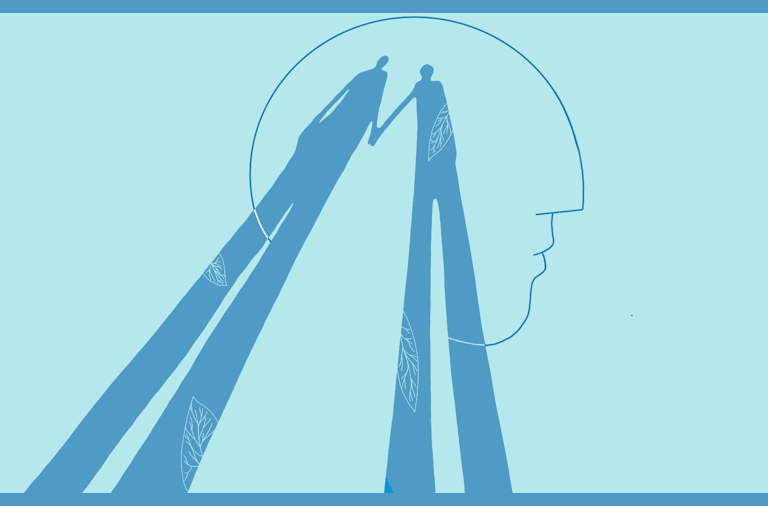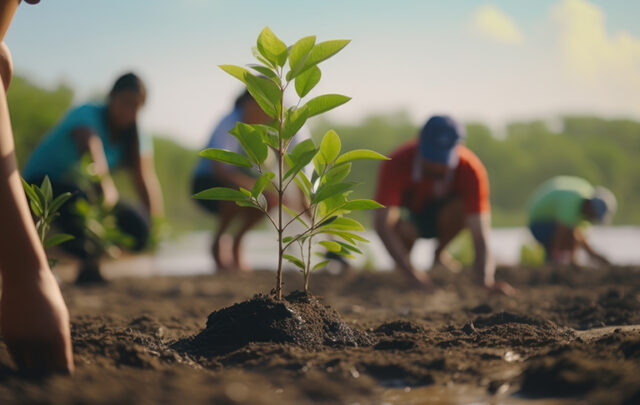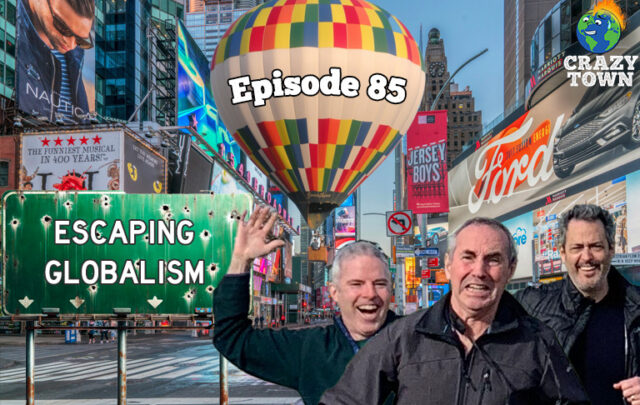NOTE: Images in this archived article have been removed.
This is part 2 of an adaptation of Laurie Mazur’s essay for the new WorldWatch ‘State of the World 2013: Is Sustainability Still Possible?‘ report.
Read part 1 here.

From the 2004 Indian Ocean tsunami to Superstorm Sandy, the last decade has seen an incredible array of natural disasters. Of course, disasters of all kinds are nothing new, but, thanks to the growing scale and interconnectedness of the human enterprise – and the damage we have done to the natural world – the frequency, scale, and consequences of today’s calamities are truly without precedent.
The proliferation of disasters is raising awareness about our collective need to minimize vulnerability and to bounce back afterwards – our need for greater resilience. In the first post in this series, we explored the characteristics of resilient social and ecological systems. Here, we look at how that thinking can be applied and at how resilience is gained and lost.
Of course, there is no one-size-fits-all guide to cultivating resilience in social or ecological systems; resilience is stubbornly contextual. But a few generalizations apply:
First, do no harm. Human beings are nothing if not resilient. Over millennia, we have colonized nearly every ecosystem on the planet, rebounding after plagues, famines, and other disasters. The lessons of those experiences are part of us; they are encoded in our immune systems and in our most enduring social structures.
That is the good news. “Resilience does not require anything rare or extraordinary,” psychologist Ann Masten observes on PBS’
This Emotional Life. “Instead it requires that basic human adaptive systems are operating normally.” This means that any effort to build resilience must begin with a deep understanding of existing strengths and adaptive mechanisms and make every effort to keep them intact.
For generations, the villagers of Quang Ninh followed time-honored practices to preserve the region’s mangrove forests, which serve as hatcheries for fish and as a buffer against storm surges. Because community members benefited equally from the mangroves, they each had a stake in protecting them.
But in the 1990s, the Vietnamese government embraced a market economy and privatized much of its land and marine resources. Commercial interests bought up the mangroves, converting them for aquaculture, mostly shrimp raised for export. Now those who benefit from the mangroves are far removed, and those who depend on them for sustenance are no longer empowered to protect them.
By crude economic measures, this policy has been a success. Aquaculture produces much greater monetary returns than subsistence fishing. But those returns are generally short-lived, writes Adger; aquaculture ponds are often abandoned within a decade. And their proceeds are distributed very unequally. While the land’s new owners make a tidy sum, many of the villagers slip deeper into poverty.
The new regime profoundly undermines social and ecological resilience, argues Adger. As the mangroves are destroyed and wild fisheries decline, villagers have fallen into conflict over the remaining resources, and the old system of cooperative management has disintegrated. At the same time, growing inequality has weakened the social cohesion that is a hallmark of resilient communities.
Ominously, the loss of mangroves – which is not only a problem in Vietnam but elsewhere in South Asia – also makes coastal villages more vulnerable to storm surges at a time of intensifying storms and rising sea levels. That loss of ecological resilience can take a measurable toll in human lives. According to a study in the
Proceedings of the National Academy of Sciences, communities with depleted mangroves in Orissa, India, suffered higher mortality rates during cyclones than those with healthy mangrove ecosystems.
See the forest –
and the trees. How, then, can we preserve intrinsic resilience in our communities and in the natural world? The first step is to attempt to understand complex systems before we start changing them. This requires a broad perspective: Focusing myopically on one part of a system, and managing for a single outcome, will likely yield
unpleasant surprises.
For example, forest management often concentrates on preventing forest fires. But fire is a necessary part of the forest lifecycle; it burns combustible deadwood and allows fire-resistant species to thrive. Without occasional fires, forests accumulate dangerous amounts of fuel, so that when a fire finally does occur it is so intense that it burns deep into the soil, destroying seeds and preventing regeneration. So by focusing narrowly on suppressing fires,
forest managers actually invite truly devastating conflagrations.
Managing for resilience begins with a deep understanding of a system and its functions at many scales. But it also calls for a certain amount of humility. We must accept that there will always be limits to what we can know about the complex systems we inhabit. With that in mind, the focus, then, should be on the
precautionary principle – at the very least, do no harm.
Embrace change. Social and ecological systems are in constant flux. Some of those changes are fast-moving and easy to track, others are more gradual. Change can be good or bad, but it is unavoidable. Trying to keep a system in the same state invariably lowers its resilience. In fact, children whose parents try to protect them from disease by preventing them from playing in dirt actually grow up with
weaker immune systems. The cliché is true: what doesn’t kill you makes you stronger. Challenges – unless they cross critical thresholds – build resilience.
Build individual self-reliance and collective responsibility. A human system is only as resilient as its component parts; social resilience rests on a foundation of individual well-being and self-reliance.
Clearly, people need to take more ownership of building resilience in their lives – by developing contingency plans for disaster and getting to know their neighbors, for example. At the same time, no one is an island; individual resilience is of limited value if the systems around us are in total collapse. And in a world where poverty and social inequality are increasing,
vulnerability is on the rise.
This was tragically apparent when Hurricane Katrina decimated New Orleans. Many residents in the poorest neighborhoods lacked the resources to cope with the disaster;
nearly a third did not own a car and alternative transportation was scarce, so 100,000 people were still in the city when Katrina made landfall. After the storm, the poorest people, families, and neighborhoods were the last to recover; many never did.
Empower women. Gender inequity – like economic inequality – can heighten vulnerability to disaster. In some areas affected by the 2004 Indian Ocean tsunami, women were
four times as likely to die as men. Why? Social roles and discrimination
made women more vulnerable: they couldn’t escape quickly because they were caring for children and the elderly, and – unlike their brothers – they hadn’t been taught to swim.
But, given their traditional roles in many parts of the world as caregivers and natural resource managers, women are also
crucial to fostering resilience. Where women have agency and power, they tend to improve not only their own resilience but that of their families and societies.
Empowering women to take leadership in their communities has proven an effective way to bolster disaster preparedness.
After Hurricane Mitch devastated parts of Honduras in 1998, for example, women got organized. In the Afro-Indigenous Garifuna community, a grassroots, woman-led group called the
Comité de Emergencia Garifuna played an important role in rebuilding – and in preventing the next disaster. Combining indigenous practices with modern science, the Comité organized tool and seed banks, planted fruit trees to limit erosion, and helped relocate neighbors from high-risk areas. The group’s efforts have improved nutrition and incomes while protecting natural resources – all building blocks of resilience.
A Resilient World Is a Better World
Fundamentally, resilience is tied to the way we treat the natural world and one another. A world that uses resources unsustainably is not resilient. A world that fails to invest in the capabilities of its people, that squanders the potential contributions of women, a world with metastasizing poverty and inequality – that world will not weather the shocks and surprises of the future as well as one that does.
But there is good news here as well. The steps to build resilience – protecting the environment, empowering the marginalized, ensuring community management of resources, reducing inequality – will also, quite simply, make the world a better place to live.
Sources: Community and Regional Resilience Initiative, GROOTS International, Gunderson and Holling (2002), National Geographic, PBS, Paul (2011), Proceedings of the National Academy of Sciences, Progress in Human Geography, Walker and Salt (2006), World Bank.






